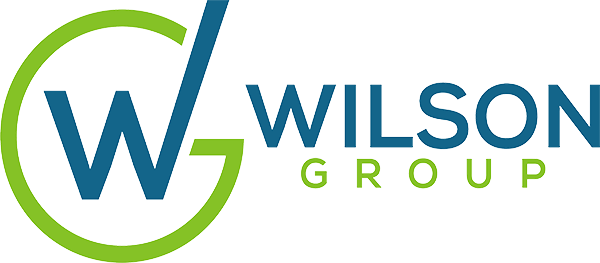When revenue opportunities significantly drop unexpectedly due to external situations like Covid-19, many organizations’ sales pipelines begin to slow down, and revenue significantly shrinks. For other organizations, unexpected windfalls may occur due to a spike in demand for their products and services. Organizations concerned with retention, sales expenses and top line revenue want to know: how should sales professionals be compensated fairly under these circumstances?
Great sales incentive plans pay sellers for results that they achieve due to activities and efforts made. Management cringes when big payouts come to those who happen to have great accounts or get sales from mostly outside forces, rather than the seller creating outstanding results. On the flip side, there is the conundrum when sellers do all the right things, but their results do not align with their activities and efforts, sometimes due to things they cannot control, like Covid-19.
During these times of change and challenge, it is useful to review your sales incentive plan features to determine if these features can be modified to better represent current market conditions, support business needs and help retain your best and brightest sellers.
Performance Measures:
- Number of measures –Measures focus a seller on what is important and shapes their behavior. By using more than one measure, it better addresses desired behaviors and result in actions that are aligned with what is best for the company. However, do not use more than three. During these times, removing measures that are barriers to sales or adding measures when sales growth is easy and infinite may help address factors outside of their control.
- Types of measures – In most cases, financial or outcome measures are the only measures included in a sales incentive plan. This is the best judge of pay for performance because we can directly see what a seller is contributing to the company’s success. Activity based measures should only be used when they are the best representation of the role’s line of sight. For example, inside sales/business development roles may include payouts for progressively moving leads forward within the sales funnel. Or new product sales may include paying for activities within the sales cycle. When activity measures are measures in a plan, limited compensation is usually attached to them. For companies with shrinking opportunity during challenging times, it may be helpful to add in one activity measure to ensure the sales cycle is addressed and helps provide payout for some performance at a time when the other measures are hard to achieve.
Incentive Mechanisms:
- Hurdles – Hurdles are when completion of one measure is required in order to be paid for another. For example, special product incentives are paid out after a seller achieves overall quota. Removing hurdles when times are tough help lessen the load for the sellers and when business is going gangbusters, hurdles can help better shape desired behaviors and outcomes.
- Thresholds – This is when a minimum level of performance is required in order to begin to receive incentive payments. If your sales force is not getting paid from dollar one, the minimum performance required for the first payout may need to be reduced for those in revenue reduction situations. For those in high demand situations, thresholds may need to be increased to reflect that outside forces are causing much of the opportunity that is falling into a seller’s lap. Thresholds are most common in industries with tight margins and when base compensation is a significant portion of on- target earnings or target total cash compensation.
- Accelerators – This is when a commission or bonus rate increases due to achieving sales tiers or for making a sale of strategic products or services. If a possible windfall is coming and soft caps or escape clauses are not currently in the plan, it may make sense to slow down incentive payments when sellers could sell significantly more than quota and the increasing rates are actually costing the company more. For example, if the seller earns three times their target incentive at 150% of quota and you expect a few sellers will achieve 200% or more of their quota, then the incentive rate would be slowed down after 150%. This is called a soft cap. An escape clause allows the organization to adjust as appropriate in windfall situations.
- Quota credits for sales – This refers to how much a dollar value of a sale is given in quota credits and it is beneficial for sellers in plans where greater achievement results in higher incentive rates. In difficult times, it may lift a seller’s motivation if certain sales or timing of sales results in more than 1:1 sales crediting. For example, all sales closed between March 15 and May 1 will receive 2:1 quota credit. In this situation you do not have to give quota relief but instead make it easier to achieve a challenging quota.
- Performance periods – Typical quotas are annual, but some industries have quarterly or monthly quotas. The reason for the prevalence of annual performance periods is due to accelerated payouts over quota. If sales are challenging to close, then creating shorter performance periods and associated quotas, may provide the motivation to get through shorter periods and be rewarded with higher incentive rates for overachievement.
- Guarantees – If your plan pays new hires either revocable or irrevocable guarantees for a period of time while they ramp up, consider if the same guarantee may now be applicable to seasoned sellers if the organization is being challenged to meet its financials. On the other hand, guarantees for new hires may not be needed if your products and services are in high demand. Typically guarantees do not fully cover target incentives but some portion, such as 75%.
Eligibility:
During challenging times, it may become obvious that some indirect roles who participate in sales incentives may not belong on a sales plan. These are roles that have other responsibilities that are more value than the part they play in sales. This may be the time to make a base pay adjustment and move them off the plan. When the payouts were strong, these roles enjoyed their participation in the Plan but now they may feel the distance they have from direct selling and compensation may no longer feel fair.
On Target Earnings:
- Quotas – A seller’s ability to earn o- target earnings or target total cash compensation is based on the quota assigned. For both types of situations, developing new quotas based on the market will help reset the seller’s goals and motivations.
Special Terms and Conditions:
- Sales Credits: Organizations have policies that address sales credits when more than one seller is involved in closing a sale and in most cases double sales credits are not common. If the likelihood of a sale increases with more sellers working together and there is more money on the table, this method is helpful during times of limited sales.
- Clawbacks: If a prior sale suddenly goes sour because the customer cannot pay or they can’t implement and the seller has been paid, you may want to give them some or all credit for the sale.
Additional Rewards and Recognition:
- SPIFFS – Recognition of activities or special sales efforts are important in both situations. Gamification improves engagement and helps rally around the short term, specific goal. These help create or keep the momentum for low cost in either situation but are most effective when times are tough, provided the goals are achievable.
- President’s Club – Most organization’s president clubs can be quite expensive because it involves the top achievers getting together in one location. With social distancing, this will likely need to be reinvented with video ceremonies or other creative ways to help participants feel they are having a special experience. If quotas are not realistic and very few if any achieve President’s Club criteria, and/or the organization cannot afford it, then the program may not make sense to have during difficult times. For those in windfall situations, the criteria should be varied and challenging to achieve. For example, rather than just the top ten sellers, include those who hit milestones, such as first sale, highest customer sale, etc.
Plan Communication:
How you communicate the plan will be more important than the design changes. When changes are communicated with a well thought out strategy, with both strong verbal and written communication, the plan has a better chance of being successful. Communication should include what was changed, why it was changed and how it benefits the seller.
Summary:
There are many elements of the sales compensation plan that may help drive the desired behaviors and results. In both cases, the organization is rewarding for results based on a new or interim market. Your business strategy and response to the market will drive the degree of response and timing. Your culture will determine the degree of protection provided to sellers in a challenging market and the degree of protection provided to the organization when sellers suddenly seem to have unlimited opportunity and all the benefit to the organization seems to be going to the sellers. This article addresses a variety of incentive elements separately, however, which changes you make should be considered in totality.

